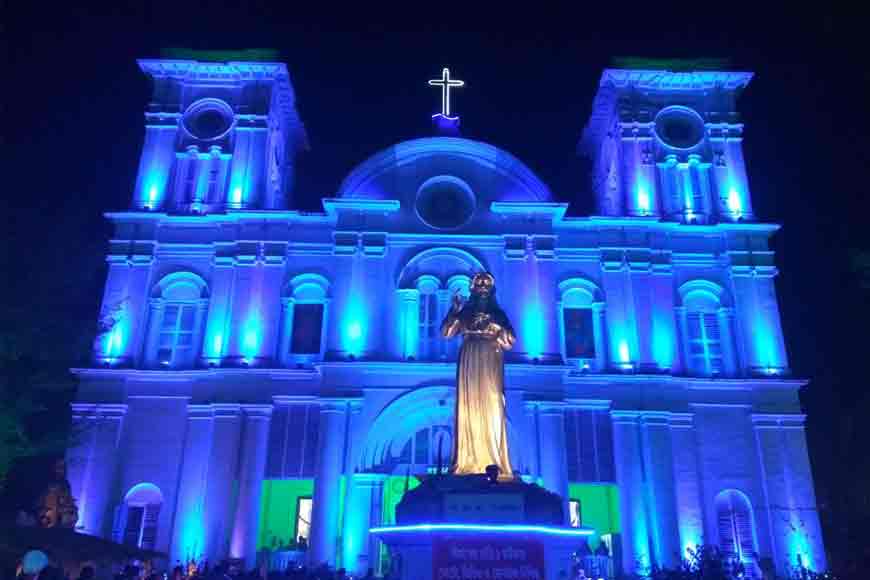How Bengal’s Little Europe can bring global tourists

The British were not the first Europeans to set up their colony along the banks of river Hooghly in and around Kolkata. Other maritime powers and traders were drawn to Bengal for its rich resources, particularly muslin silk, spices and opium, and established their Kuthis along the river. After explorer Vasco da Gama reached India’s west coast in 1498, the Portuguese began to build a community in Bandel since 1580s. The Dutch soon found a settlement in Chinsurah, while the Danish set up an enclave in Serampore, followed by the French in Chandannagar. They built ports, warehouses and churches, and then forts, luxurious mansions and educational institutions.

Little Europe is a 50km stretch northwest of Kolkata, that in recent years is experiencing a slow but definite revival. A growing trickle of tourists journey up the river and European countries have started taking a renewed interest in their imperialist pasts. After all, there is so much of culture and heritage still left behind that has a huge tourism potential. In November 2013, the state tourism department published a new master plan detailing how the state government plans to design a circuit along the Hooghly.

Bandel happens to be one such town of Little Europe. The first significant building erected by the Portuguese in this area was the Basilica of the Holy Rosary, completed in 1599, the oldest church in northeast India today. At the time of construction, the Hooghly reached right to the broad steps of the church. But the river has changed course and the space between the Basilica and the river bank is now occupied by a garden where workers toil in the sun to create the Stations of the Cross.Fifty years ago, there were just five or six Christian families in Bandel, now there are 600, and visitors of all faiths and from all over the world often congregate at this church.

Bandel’s other architectural highlight is the Hooghly Imambara. Built in 1861 by a prominent philanthropist from the local Shia Muslim community, this sprawling Islamic assembly hall was constructed in the shape of a rectangular courtyard, framed by long pillared galleries and squat twin towers. Huge iron bells hang in the towers’ joint roof, which can be reached by two sets of 152-step stairs, one for women, another for men. The structure is now being restored by the Archaeological Survey of India.

A few kilometres downriver, the Dutch founded Fort Gustavus in Chinsurah in 1635. The Armenians joined them in 1645 and for some years the two communities traded in saltpeter, textiles and spices with Bengali merchants. In 1825, Chinsurah was formerly ceded to the British and the Dutch were reduced to traders.

Since 2014, the "Dutch in Chinsurah" project, initiated by the Dutch government, Presidency University Kolkata and Aishwarya Tipnis Architects, a firm specializing in conservation projects across the subcontinent, has been mapping the remaining historical buildings to find ways to enhance the heritage value of Chinsurah and to prepare a viable tourism package for the state.

The Dutch buildings, for the most part, have been reappropriated for local needs. What is left of Fort Gustavus now serves as an Islamic boy's school, the Hooghly Madrassa. Next door, the erstwhile Governor's House is used as the District Magistrate's office. The District Court, built by the Dutch in 1829, allegedly features the longest corridor in India, once accessible to noblemen who rode straight up to the first floor on horseback. The only building attesting to the Armenian presence is the beautifully restored Church of St. John the Baptist, visited on an annual pilgrimage by Kolkata's Armenian community.

France established Chandernagore, now known as Chandannagar, in 1673. The French managed to hang on to their outpost until 1952, a few years past India's independence, and the river promenade -- the Strand -- retains a distinctly Gallic flair. Lined with an incredible collection of colonial edifices including the Chandernagore Sub Divisional Court, the Sacred Heart Church, the mansion of former French commander Duplessis, now the Chandannagar Museum and Institute, and a spectacular pavilion, imbued with displaying the French national motto "Liberte, Egalite, Fraternite", the avenue is popular with young lovers, who occupy the rows of benches facing the Hooghly in the afternoons.










